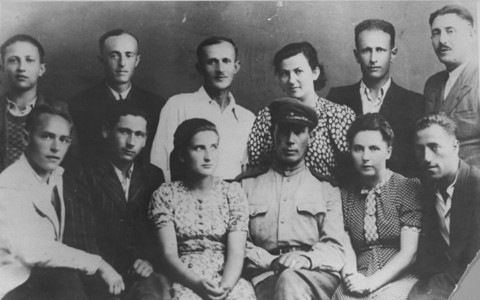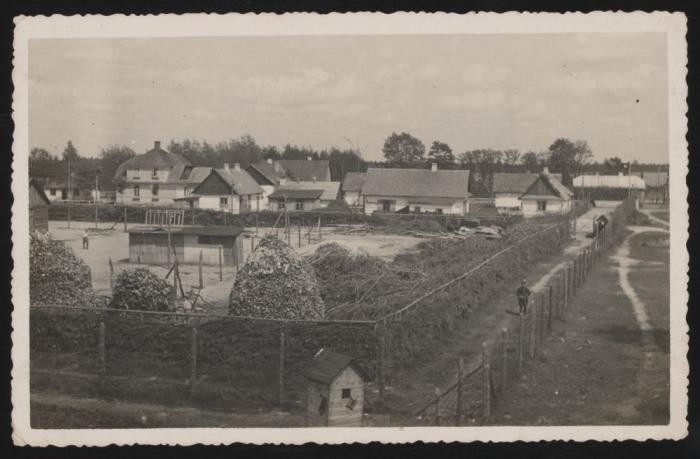
Sobibor Uprising
Under the most adverse conditions, Jewish prisoners initiated resistance and uprisings in some Nazi camps. On October 14, 1943, prisoners in Sobibor killed 11 members of the camp's SS staff, including the camp’s deputy commandant Johann Niemann. While close to 300 prisoners escaped, breaking through the barbed wire and risking their lives in the minefield surrounding the camp, only about 50 would survive the war.

Sobibor was one of the killing centers Nazi Germany established for the sole purpose of murdering Jews. German SS and police authorities constructed Sobibor in the spring of 1942. It was built as the second killing center within the framework of Operation Reinhard, the plan implemented by the SS and Police Leader in Lublin to murder the Jews of the Generalgouvernement (General Government).
Planning for an Uprising
In the summer of 1943, the Sobibor killing center saw a decline in the number of victims sent to be murdered in its gas chambers. This sparked a rumor among the prisoners forced to labor in Sobibor that the killing center would soon be dismantled and all the prisoners murdered. A group of Polish Jews led by Leon Feldhandler formed a secret committee to plan a mass escape. However, its members lacked any military experience and made little progress.
When a group of Jewish Red Army POWs arrived in a transport from Minsk in September, the committee turned to them for advice. Within three weeks, Lieutenant Alexander Pechersky worked out a detailed plan. First, the Soviet POWS would secretly kill some of the SS officials, taking their weapons and uniforms. Then, when the approximately 600 prisoners assembled for evening roll call, the POWs masquerading as camp personnel would kill the guards at the gate and on the towers and urge the prisoners to flee. The revolt was set for a day when Sobibor's commandant and several of its leading officials would be away.
The Uprising
The uprising began around 4:00 in the afternoon of October 14, 1943. In Camp One, prisoners invited the deputy commandant, Johann Niemann, into the tailor shop to be fitted for a suit. They then killed him with an axe. In Camp Two, prisoners lured SS NCO Josef Wulf to try on a coat in the warehouse of victims' belongings, and also killed him with an axe. In the course of the next hour or so, nine more SS personnel were killed in a similar manner.
As the prisoners gathered for roll call, however, the remaining camp personnel became alarmed and opened fire on the prisoners. While members of the camp resistance who had obtained arms returned fire, over 300 prisoners fled from the camp.
Many prisoners were shot during the escape or died in the minefields around the camp. At least 100 others were caught and killed during the massive manhunt conducted by SS, police, and German army units in the days following the uprising. Of the perhaps 200 escapees who were not immediately caught, only about 50 survived the war, often with the help of the local population or by joining partisan groups. On the other hand, many of the escapees who did not survive were betrayed to the Germans or killed by Polish civilians or partisans.
In the end, prisoners killed eleven members of Sobibor's SS staff as part of the planned escape. Two or more non-German SS auxiliary guards who were in the wrong place at the wrong time were also killed. All of the prisoners remaining in Sobibor—some of whom continued to fight with guns and axes throughout the night—were shot by the end of the following day on October 15.
Soon afterward, the SS brought in a group of Jewish prisoners from Treblinka to dismantle the killing facilities and erase the traces of Sobibor's true function. In late November 1943, those Jewish prisoners were murdered as well.

